What is Loft Architecture?

Known for mixing spacious interiors, high ceilings, and often an industrial aesthetic, loft architecture has become synonymous with urban living. Whether you want to move into your own loft or seek design inspiration, loft architecture offers spaces that foster creativity and versatility. Let’s explore the history, significance, and defining features of loft architecture that fuel its popularity in cities around the world today.
History of Loft Architecture
Over the years, lofts have evolved from repurposed industrial spaces for budget-conscious artists into sought-after symbols of high-end urban living. Lofts, originating from abandoned warehouses and factories in big cities like New York and Boston, were first utilized by artists and innovators who turned these spacious industrial layouts into workshops and living quarters for next to nothing in price. With their utilitarian aesthetic, ample square footage, and sizeable windows that let in plenty of natural light, they were ideal spaces for the dual purpose of living and working. However, in recent years, loft architecture has shifted from utilitarian to more modern, luxury design.
Features of Loft Architecture
Loft architecture is all about maximizing space and embracing industrial features left behind by the buildings’ previous lives. So, along with tall ceilings, open floor plans, and large walls of exposed brick, lofts often also feature plenty of other industrial architectural and design elements. Elements like floor-to-ceiling windows, concrete and hardwood floors, exposed structural beams and duct or pipework, and large doors all contribute to the charm and functionality of loft architecture.
How to Maximize Loft Space
There are endless ways to design the inside of a loft apartment. But to truly make the most of your space, the key is to celebrate the unique features that define it as a loft while keeping both functionality and aesthetics in mind.
Here are a few tips to maximize your loft space:
Utilize vertical space, define areas, and invest in multifunctional furniture! By using the abundance of vertical space and installing bookshelves or cabinets, and by investing in multifunctional furniture like foldable dining tables or beds with built-in storage, you can maximize every square foot in your loft space. It also helps to organize your furniture and place area rugs in ways that define the different spaces within your loft and create a sense of separation.
Lean into the industrial aesthetic of loft living by incorporating industrial-inspired furniture such as metal stools or reclaimed wood tables. Many loft dwellers also enjoy showcasing the features that make lofts unique, like tall ceilings, concrete or hardwood floors, and exposed brick. Balance this out by complimenting your space with modern or minimalist decor pieces.
Personalization is the final touch to truly making any space feel like home. Try bringing your personality and creativity into your loft with artwork and decor that reflect your interests. Also, choose color schemes and lighting that create a positive, inspiring mood. These personal touches add character to your loft and help create a space that will bring joy every time you walk through the front door.
5 Features of Mediterranean Interior Design
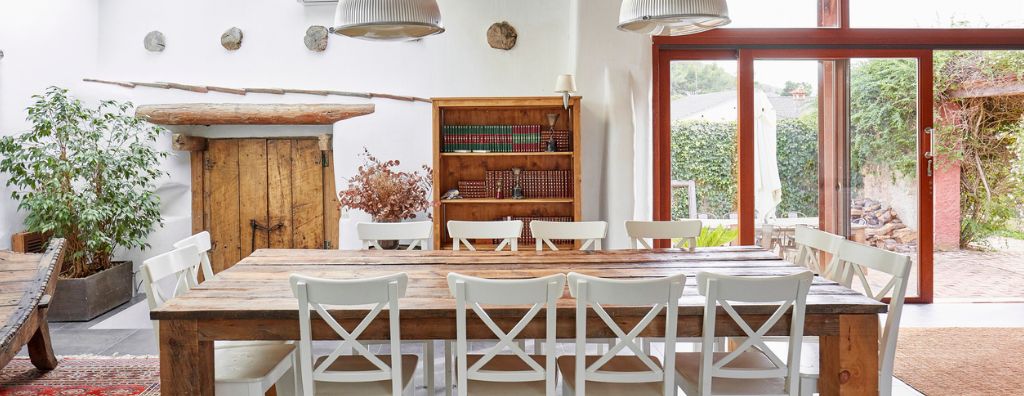
There’s so much beauty in the countries that border the Mediterranean Sea, it’s no wonder the design style derived from this area of the world has the same effect on a home’s interior. Mediterranean interior design, part of the larger coastal design family, creates interiors that harmonize with the outdoors. Here are a few of its most common features.
5 Features of Mediterranean Interior Design
1. Mediterranean Materials
This style borrows primarily from the longstanding traditions found in Greece, Spain, and Italy, with additional influence from Mediterranean countries like Morocco and France. People have lived in this area of the world for thousands of years, each civilization attaining high levels of achievement in art and culture. Accordingly, the common materials that make up this interior design style show a timeless appeal. Dark wood, marble, or terra cotta tile are popular flooring choices, while the walls are typically made of stucco or plaster.
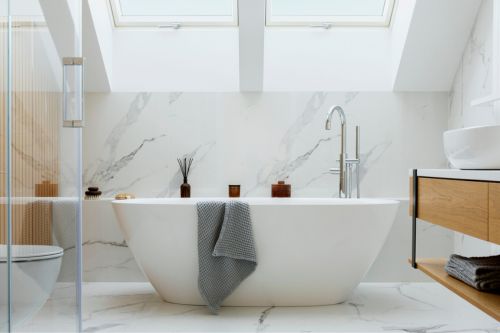
Mediterranean interior design bathroom | Image Source: Getty Images – Image Credit: FollowTheFlow
2. Mediterranean Color Palette
Prepare to be inspired. The colors found in a typical Mediterranean palette are tailor-made to make your interior come to life. Each hue is a rich variation of the colors we’re most familiar with in interior design. Golden yellows, olive greens, rich reds, and cobalt blues form the basis of the Mediterranean style. These colors all pop against a white stucco backdrop and evoke liveliness while being grounded in natural and organic elements like the sun, trees, and water.
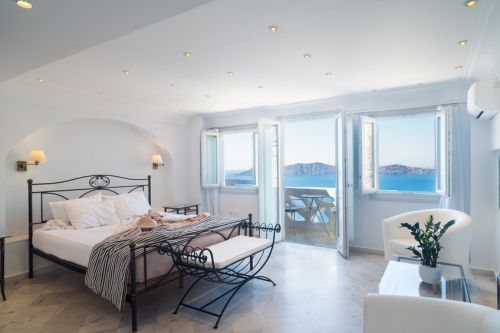
Mediterranean interior design bedroom | Image Source: Getty Images – Image Credit: amriphoto
3. Harmony with Nature
The ultimate Mediterranean interior is at one with nature; it’s somewhere you can walk around barefooted while a gentle breeze blows through the room. From its exposed wood beams to natural stone walls, everything about Mediterranean interior design embraces the outdoors and the elements derived from it. Open-air patios are often the central entertaining space, putting an emphasis on indoor-outdoor living.
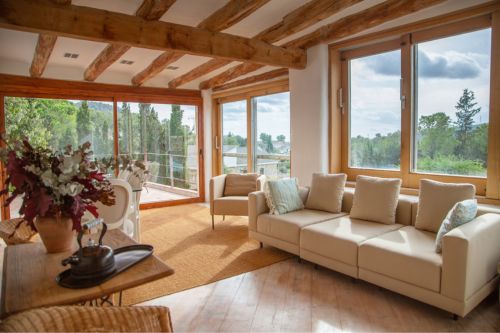
Mediterranean interior design living room | Image Source: Getty Images – Image Credit: Julieanne Birch
4. Mediterranean Decorative Elements
Overall, Mediterranean design takes a less-is-more approach to home décor. Relying on the natural beauty of its elements, its philosophies on design have more in common with mid-century modern interior design than, say, eclectic style. Common decorative items include textured walls, tapestries, mosaic inlays, and Italian-style pottery and art. The countries that form the inspiration for Mediterranean style all have their unique take on sculpture art, commonly found in historical buildings and traditional architecture. Accordingly, sculpted detailing is a fitting décor feature in this style.
5. Bringing People Together
At the end of the day, people are an important part of Mediterranean interior design. Family spaces are a priority, as are communal seating arrangements in areas like the living room, dining room, and outdoor patio. Once you design your home this way, you can’t help but invite family and friends over to celebrate together. The open spaces and natural elements create a welcoming environment that is meant to be shared. Happy hosting!
For more information on home décor, read our blog post on contemporary interior design and how it differs from the modern style:
Featured Image Source: Getty Images – Image Credit: xavierarnau
What is Victorian Architecture?
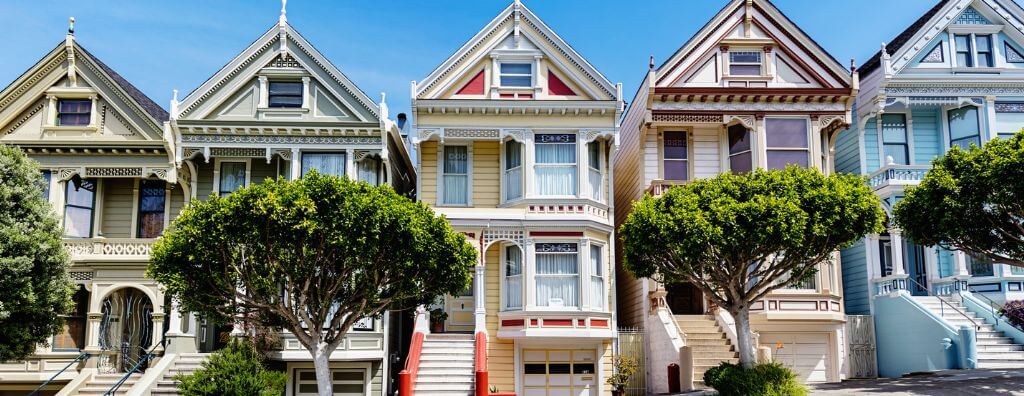
Like its namesake Queen Victoria, Victorian architecture is home design royalty. With its uniquely detailed decorations, it helped to define the style of homes in its era. These special homes still exist in large numbers today around the world, perhaps none more famous than San Francisco’s “Painted Ladies” near Alamo Square pictured above. Let’s dive into the history of Victorian architecture and some of its defining features.
What is Victorian Architecture?
Bursting onto the scene in the mid-1800s, Victorian architecture spawned several styles, creating multiple branches of the Victorian home design tree. Borrowing elements of other architectural styles of that era such as Gothic, Greek Revival, and Italianate, the highly ornate style reflected the expensive taste among the British people of the time, who were experiencing increased wealth due to the industrial Revolution. Much of the work required for building Victorian homes could be done by machine, and due to the industrial innovations of the time, the parts could be easily shipped across the country by train. Pretty soon, Victorian homes were popping up everywhere.
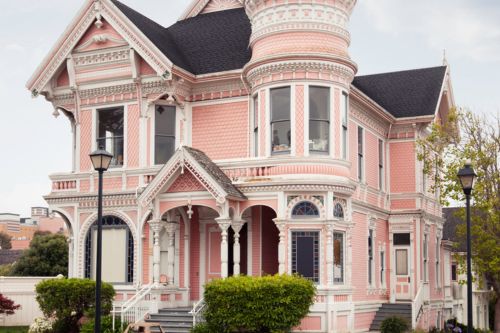
Image Source: Getty Images – Image Credit: LordRunar
Features of Victorian Architecture
- Two to three stories
- Steep, pitched roofs
- High ceilings
- Wood construction with detailed woodwork
- Decorative trim and crown molding
- Towers and turrets
- Spacious porches
- Recessed balconies
- Iron railings
- Bay windows
- Stained glass
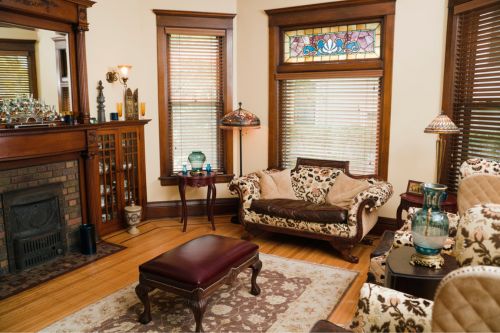
Image Source: Getty Images – Image Credit: YinYang
Styles of Victorian Homes
Though there are several styles of Victorian homes, they are all multiple-story structures with steeply pitched roofs. Part dollhouse, part palace, their vintage character remains popular today. The Stick Victorian style resembles a gingerbread house with its decorative cladding and trim. The Queen Anne style is known for its asymmetry and cross-gable rooflines, while the Folk style is more symmetrical, cutting down on excessive ornamentation. As if the architecture itself wasn’t loud and eclectic enough, many Victorian homes were painted in bright colors to further differentiate their style from other homes—especially Queen Anne Victorian homes.
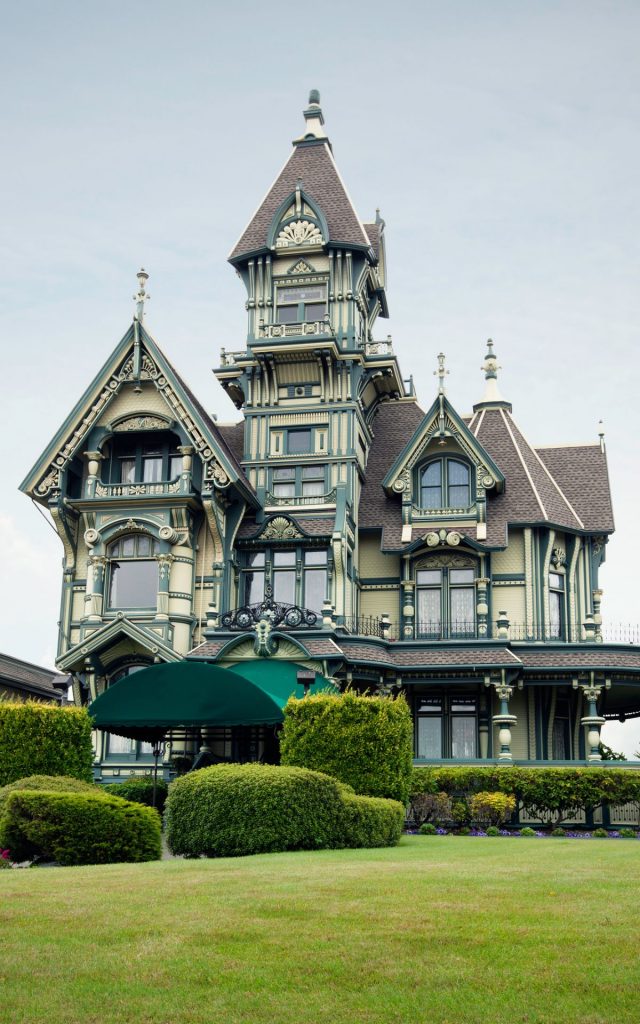
The Carson Mansion in California, a classic example of Queen Anne Victorian architecture. Image Source: Getty Images – Image Credit: LordRunar
To learn more about the various styles of home design, visit our Architectural Styles page:
Windermere – Architectural Styles
Featured Image Source: Getty Images – Image Credit: Mlenny
Eclectic Interior Design
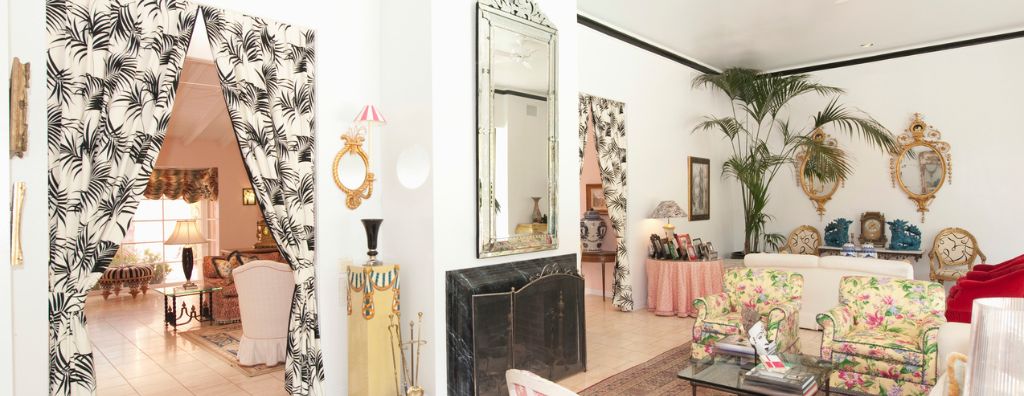
When decorating your home, it can be hard to decide on just one aesthetic. Maybe you’re a fan of mid-century modern interior design but its minimalistic approach leaves you wanting more. Maybe you love the clean look of a farmhouse style interior but wish it had some of that classic Art Deco flair. Fortunately, there’s an approach you can take where you don’t have to limit yourself to the principles of just one line of design thinking. Eclectic interior design is a smorgasbord of home décor styles that allows your imagination to run wild.
What is eclectic interior design?
Eclectic interior design is a blend of different styles, patterns, eras, and all things home décor. By pulling from seemingly contrasting sources of inspiration, it allows homeowners to create an interior that’s uniquely personalized and lively. Eclectic interiors are inherently busy, so it’s important to focus on leveling the dynamic energy among the pieces and artworks you select to create balance, scale, and proportion.
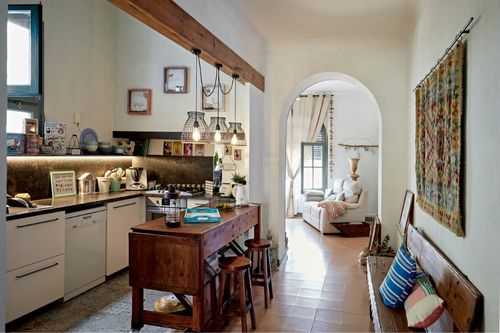
Image Source: Getty Images – Image Credit: xavierarnau
Decorating with Eclectic Interior Design
With so many shapes and colors at play, creating harmony is vital. Choose a color palette for your home and select pieces that reinforce that section of the color wheel. That way, when you decorate with accent pieces throughout your home, you’ll have a solid base to work from. This will also help you select which neutral colors will best help to balance out your interior spaces. For example, if you’ve settled on blues and browns as your foundational colors, beiges and creams will act as complimentary neutrals while creating a comfortable, welcoming atmosphere.
When it comes to textures and patterns, you’ve got far more leeway with eclectic interior design than many other styles. Have you been waiting to extract your patterned vintage furniture from your storage space? Still waiting to find a home for that ornate gold-framed mirror? Eclectic design may be just what the doctor ordered. With this style, vintage design can pair with modern furnishings and vice versa. Textures help to create contrast throughout your spaces, but even with eclectic design, repeating a texture in a few spots helps to create cohesion. Similarly, make sure your textural pieces fit somewhere within your color palette to create consistency throughout your home.
Create a Gallery Wall
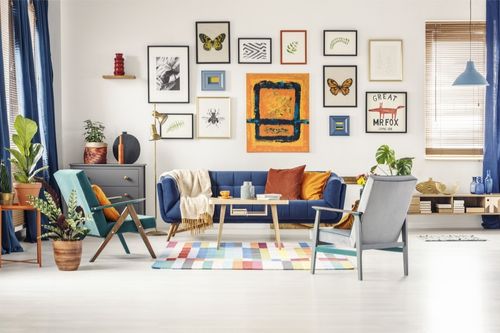
Image Source: Shutterstock – Image Credit: Ground Picture
A gallery wall is naturally eclectic, making it a perfect way to use up empty wall space while reinforcing this unique home décor style. Create a gallery wall at home by selecting the wall space you’d like to use and mapping out your desired gallery pattern. Once you’ve sketched out your plan, pay a visit to your local framing or hardware store so your artwork can hang professionally and evenly. Assemble your tools, hang your pieces, and admire how a gallery wall can really snap a room together visually. Experiment with different frame colors, designs, and textures that reinforce the rest of your interior. Here’s more on how to curate artwork in your home.
For more info on the various interior design styles, home décor tips and more, visit the Design page of our blog:
Featured Image Source: Getty Images – Image Credit: IPGGutenbergUKLtd
What is a Rambler House? 5 Features of Ranch-Style Architecture
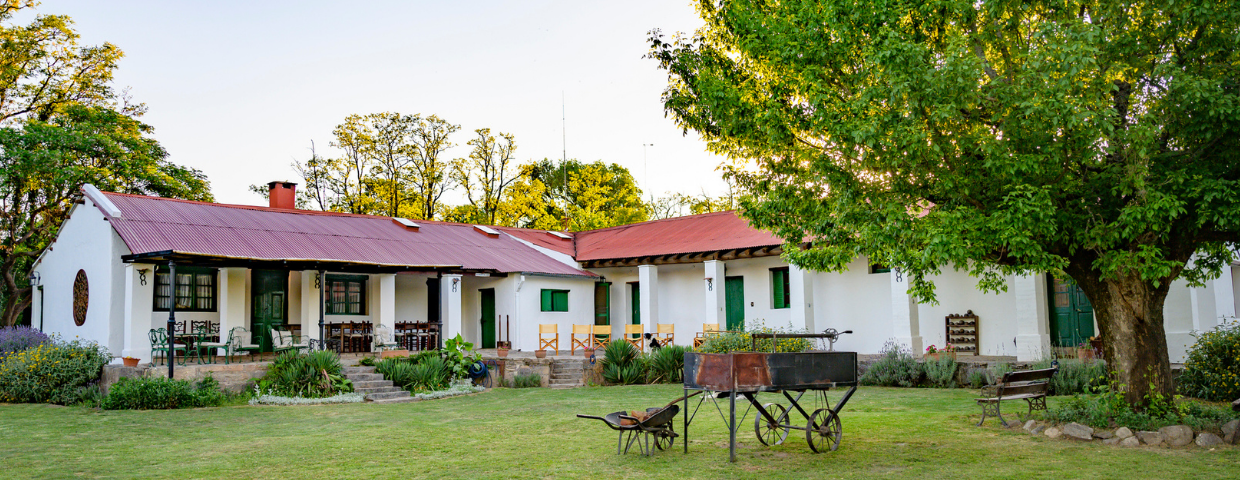
The distinct rambler architectural style is known by several names: rambler, ranch house, California ranch, and more. Whatever you call it, it has played an important role in the evolution of the American home. From its spacious interior to its welcoming layout, these homes are tailor-made for a comfortable home life.
History of the Rambler House
It wasn’t until the 1950s and 1960s that the rambler became a staple of domestic American life as the suburban boom reached new heights. The intention behind the architecture was simple: design the perfect post-war American home. The term “rambler” was a reference to the way the single-story design sprawled—or rambled—across the landscape. This home design mirrored the landscape of the American West and allowed for expansive views of surrounding land on a level plain.
Over time, the rambler style began to take on elements of modern design and eventually evolved into split-level homes, creating variants such as “raised ranch style,” “suburban ranch style,” and “storybook rambler.” To this day, these homes are found in great numbers across the country.
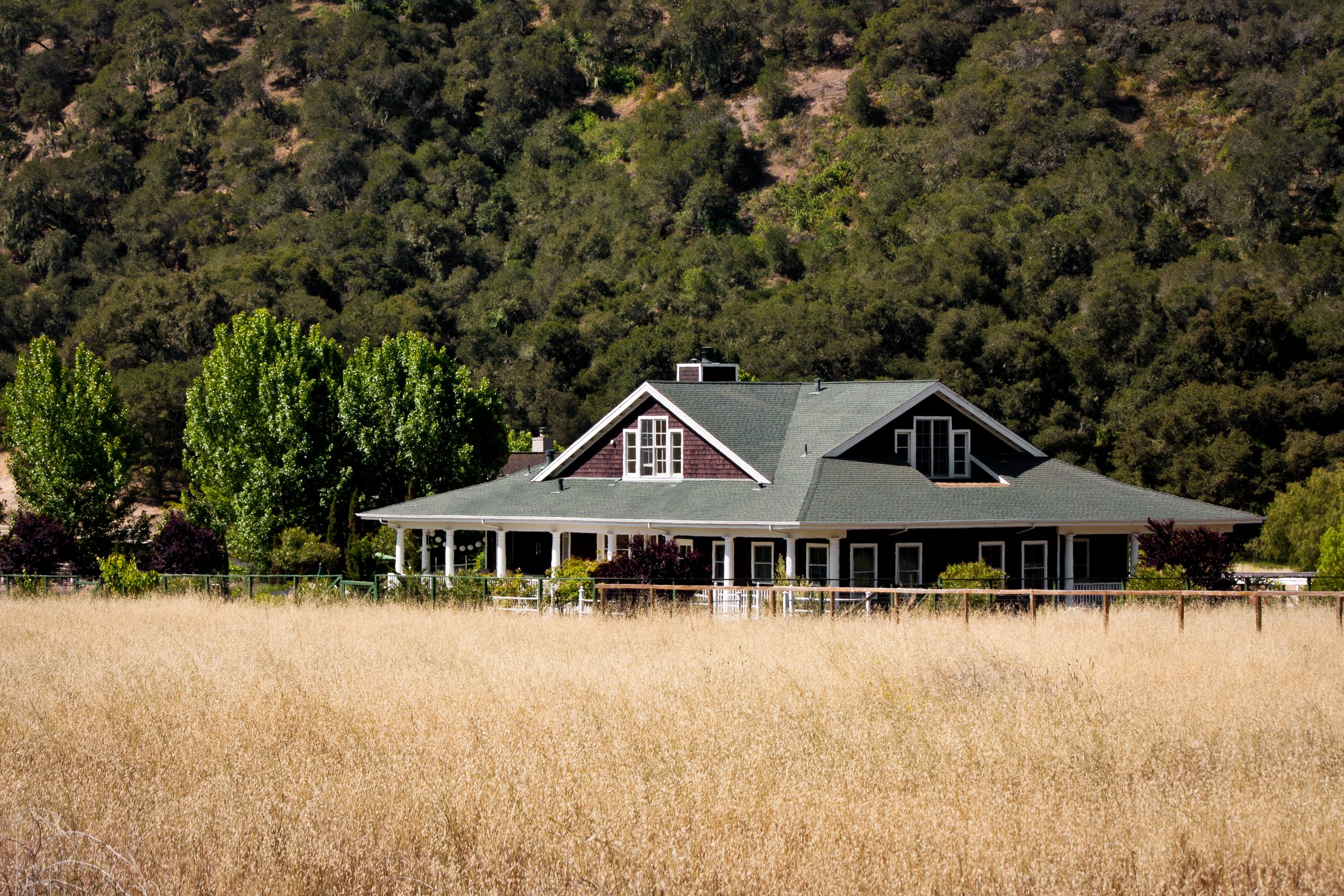
Image Source: Getty Images – Image Credit: pbk-pg
5 Features of Ranch-Style Rambler Homes
1. Low-Pitched Roof and Eaves
Similar to the Craftsman style home, it’s common for ranch-style homes to have low-pitched roofs and overhanging eaves. These architectural features help to give ranch-style homes their distinct sprawling look.
2. Open Floorplan
Ramblers are known for their open interiors that allow for easy movement throughout the home’s horizontal spaces. The spacious layout is often anchored by a central area which creates a feeling a continuity between rooms, a concept that was influenced by modern architecture.
3. One-Story Buildings
Though their wide layouts make for large footprints, the majority of rambler homes are one-story structures. The terms “rambler” and “ranch house” are used interchangeably. However, raised ranch houses and split-level ranch houses will often have a basement, whereas the classic rambler home is a one-story building with a ground-level entry.
4. Attached Garage
This was one of the first architectural styles to incorporate an attached garage into the home design. This evolution in home design perfectly suited the needs of the modern American family in the 1950s and 1960s.
5. Connection to the Outdoors
In another nod to modernist homes, ramblers often prioritized outdoor spaces for entertaining and gathering. This connection to the outdoors is reinforced by large windows and easy access to back patios to create a connection between nature and the home itself.
For more information on different home designs, check out our Architectural Styles page.
Featured Image Source: Getty Images – Image Credit: JohnnyGreig
5 Interior Design Trends for 2023
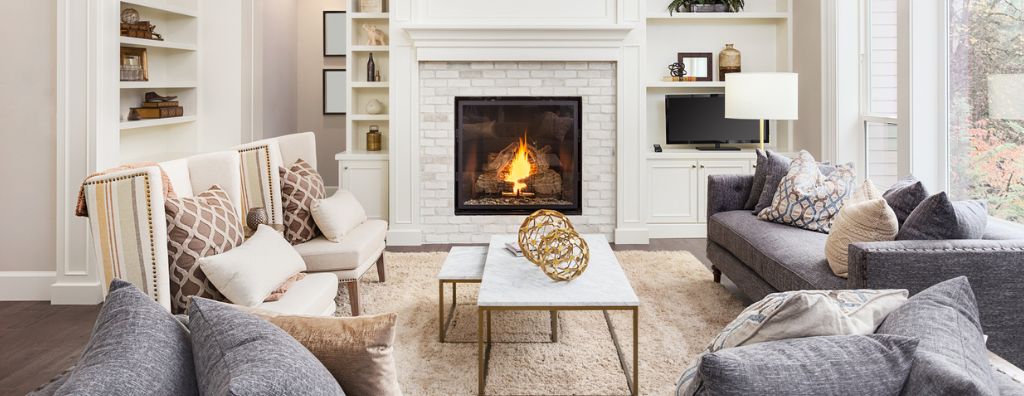
The interior design trends of 2022 included a renaissance of colorful decorating, a preference for sustainable materials, and incorporating nature throughout the home. They reflected the continued evolution of our lifestyles in recent years and showed an overall desire for our homes to be somewhere we can relax, decompress, and focus on our wellbeing.
With 2023 just around the corner, expect to see the latest design trends continue that trajectory of creating a home that’s vibrant yet soothing.
5 Interior Design Trends for 2023
1. Butler’s Pantries
There’s something endlessly fascinating about features throughout a home that tie spaces together and create harmony. A butler’s pantry is the perfect resource for homeowners who feel their kitchens are always running at capacity. Typically located adjacent to the kitchen or dining room, modern butler’s pantries are often concealed behind cabinets or pocket doors. An economical solution for food and kitchen item storage, they allow you to prep meals outside the kitchen, gather silverware, and prepare to set the table. Kitchens are the heart of the home, and this space has taken on even more significance in recent years. It’s no wonder these special home features are on the rise.
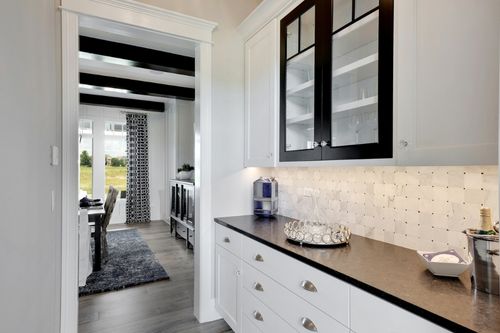
Image Source: Getty Images – Image Credit: PC Photography
2. Colorful Kitchens
Color in the kitchen is back in style! The neutral-toned backdrop of farmhouse-style interiors that leapt to the forefront of home design in recent years is still popular, but homeowners can expect to see more bold colors in 2023. The kitchen island, cabinets, and backsplash are three target areas for adding color to your kitchen. These large surface areas are tailor-made for color splashes to lead the eye throughout the room. Experiment with complimentary tile designs, two-toned cabinets, and dark-stained wood to create a kitchen atmosphere that feels anything but bland.
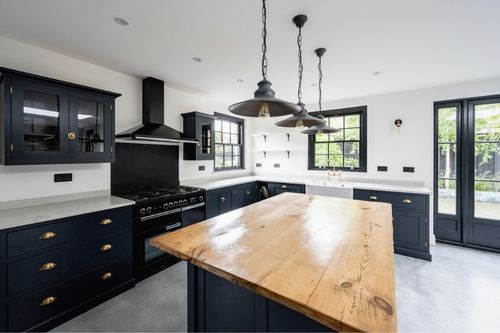
Image Source: Getty Images – Image Credit: JohnnyGreig
3. Organic Materials and Décor
In some ways, the design trends that defined 2022 will continue into next year. One such trend that will ring true in 2023 is a desire to fill the home with organic materials. Indoor plants will continue to be a popular decorative item throughout the home, both for their health benefits and their ability to mix and match with any décor style. In the living room, natural materials like stone, wood, and organic fabrics will help tie a home’s organic aesthetic together. And in the kitchen, stone and marble countertops add an earthy touch.
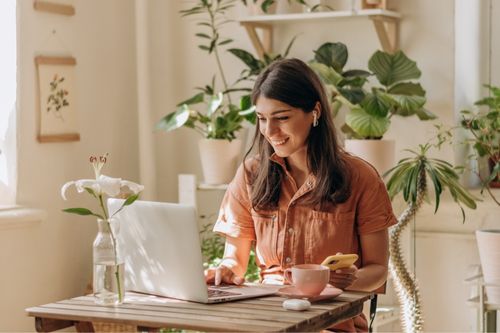
Image Source: Getty Images – Image Credit: Tatiana Buzmakova
4. Earth Tones
While bold colors are making their return to the kitchen, earth tones will help to balance out homeowners’ interior design palettes next year. Many design leaders’ color of the year selections for 2023 are in, all showcasing unconventional takes on earthy colors. Whether it’s beige, magenta, cream, or forest green, you can use these shades throughout your home to create balance and ground your bolder color choices elsewhere. Looking to swap out your grey couch? Have you always wanted to paint your gallery wall something other than off-white? Now is the time!
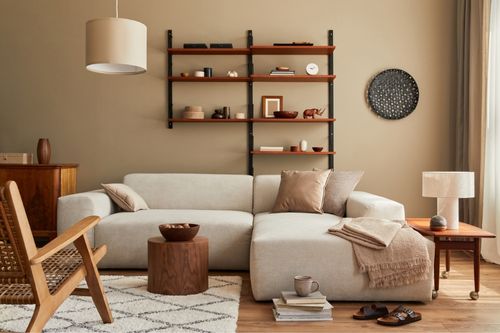
Image Source: Getty Images – Image Credit: FollowTheFlow
5. Intentional Spaces
Homeowners have made significant adjustments to their lifestyles in recent years. For many, that’s meant spending time on their hobbies, exercising, and working on passion projects at home, whereas previously they may have gone elsewhere. After a couple years of making do with whatever space was available, moving forward, we’ll see a more intentional approach to creating space at home for those activities. Whether it’s building out a home gym, setting up your home office, craft room, art studio, yoga sanctuary, etc., having a dedicated area allows for privacy and focus while doing the things you love.
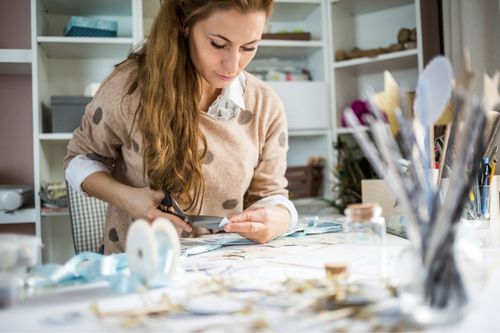
Image Source: Getty Images – Image Credit: Petar Chernaev
Interior design trends continue to evolve with our lifestyles and needs as homeowners. For more information on interior design, architecture, remodeling tips, and more, head to the Design page on our blog:
Featured Image Source: Getty Images – Image Credit: hikesterson
Contemporary Interior Design
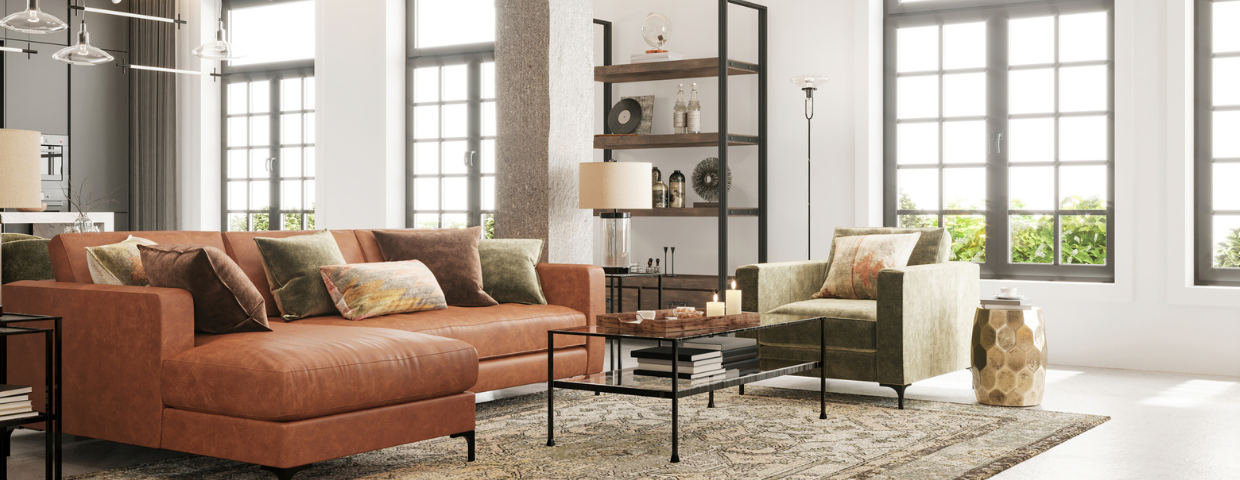
Although there are certain fundamental principles to contemporary design, it is constantly evolving. While other interior design styles are often rooted in a specific period, contemporary design is set in the present. What’s popular now is what’s popular in contemporary design. Its ability to remain timeless is what gives contemporary design its greatest quality—it never goes out of style. Learn a bit more about contemporary design to find ways to incorporate it into your home.
What is contemporary interior design?
Contemporary style is characterized by clean lines, state-of-the-art materials, and a preference for openness over ornamentation. These tenets go hand in hand with the philosophies of modernism and minimalism, but contemporary design simply dips its toes in these other design styles without relying on them too heavily.
The aesthetic of modern construction lends itself well to contemporary design. Industrial spaces and open rooms with high ceilings and large windows help to deliver a magazine-quality contemporary look. But even if your home isn’t tailor-made for contemporary design, you can still curate it.
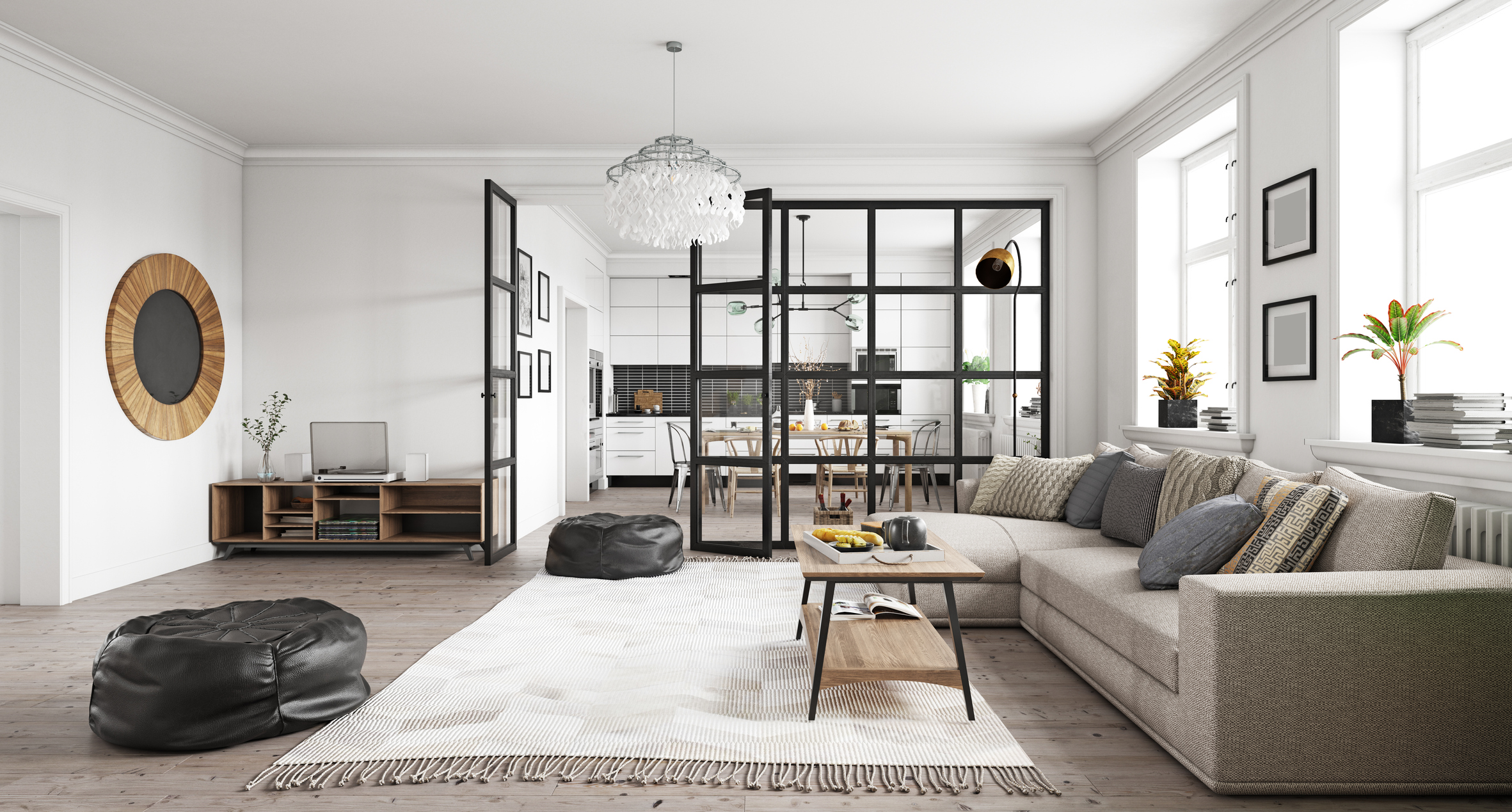
Image Source: Getty Images – Image Credit: vicnt
Contemporary Design in Your Home
The simplest way to incorporate contemporary design philosophy into your home is to let the natural architectural elements show. Let your exposed wooden beams and brick walls shine, decluttering the spaces around them to make them the focal point. This can make your spaces feel empty at first but remember; contemporary design is all about opening things up to effectively apply decorative details.
Choose modern furniture with clean lines and solid-colored fabrics. In the kitchen and bathroom, chrome and metallic surfaces will reinforce a contemporary aesthetic. When decorating, start with a neutral foundation (white, grey, and black) and add bold accent colors on top. The timeless appeal of a hardwood floor makes it a fitting choice for achieving contemporary style, while textured textiles in natural fabrics will help to liven up your spaces.
Stone, metal, and glass mix well in contemporary design, often combined in the selection of living room sets, decorative centerpieces, and kitchen/bathroom design. Large pieces of art, accent walls, and bold decorations help to broaden the color palette of contemporary spaces. You are free to choose bold, impactful hues from across the color spectrum in your decoration.
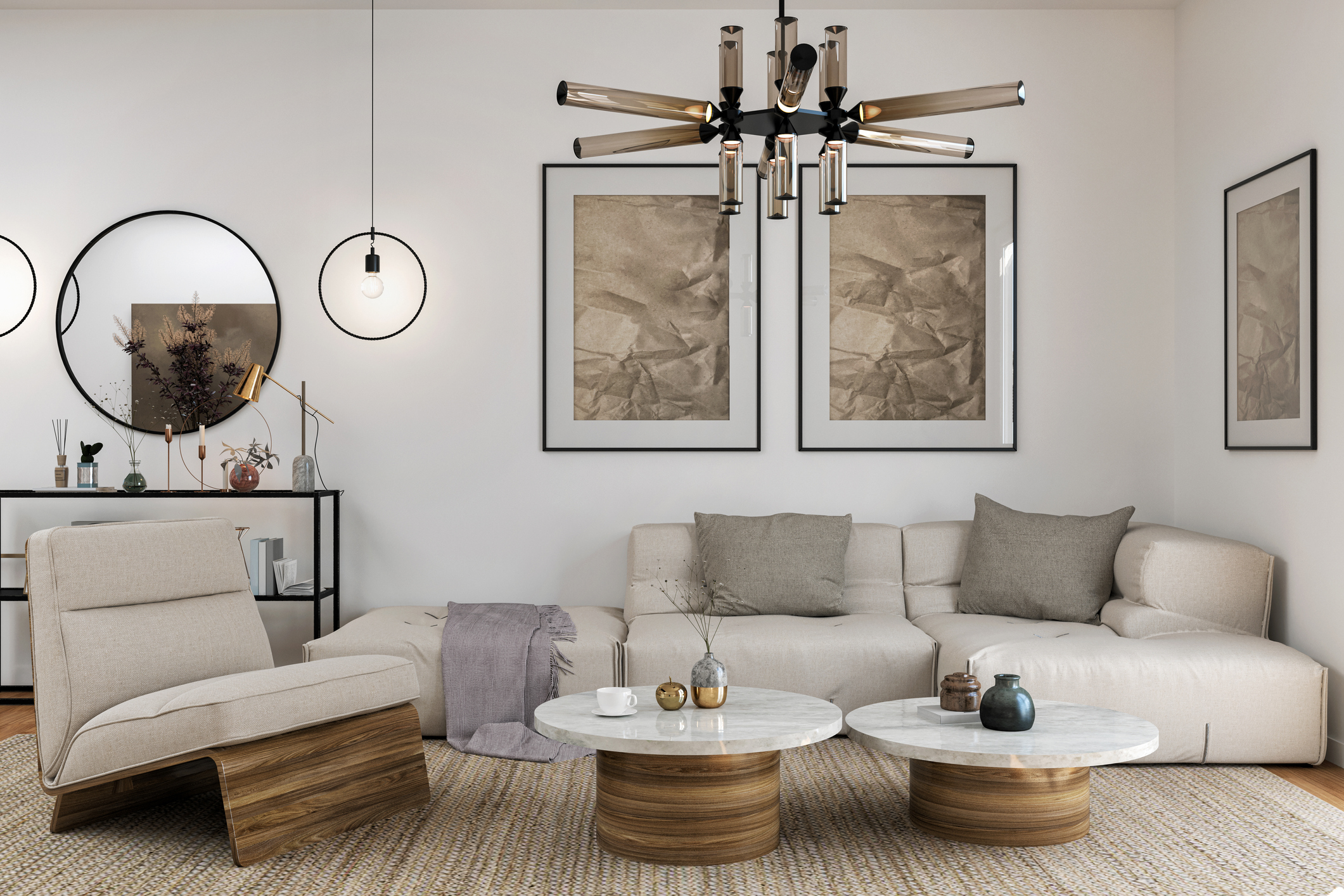
Image Source: Getty Images – Image Credit: AleksandraZlatkovic
The Differences Between Contemporary and Modern Design
Whereas contemporary design is centered on what is popular during the present, modern design is rooted in a specific time period. Modern design dates back to at least the early twentieth century, which evolved into mid-century modern during the 1950s.
Modern design typically has earthier colors and a general preference for wood, whereas saturated colors and metals/glass are more at home in contemporary design. Choosing modern design means you’re choosing to make decorative variations on a theme, whereas the theme of contemporary design is always changing, so you never know where it might lead.
Visit our Design Styles page to learn more about common interior design styles and how you can incorporate them into your home:
Colorful Modern Design Trends for Your Home
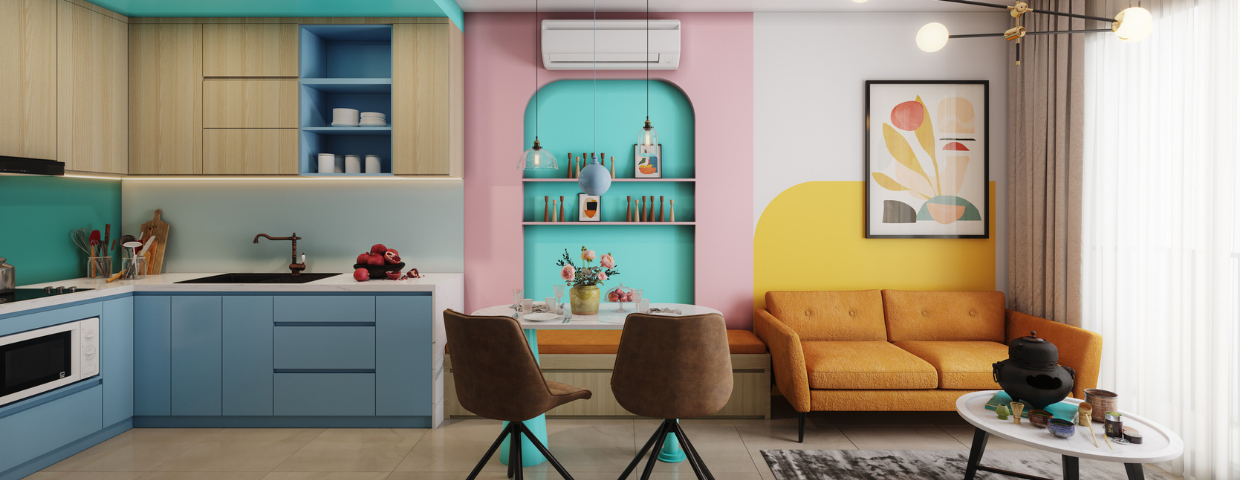
Designing your home can feel like trying to put together a puzzle. While neutrals can help create consistency and set a calming tone in your home, color is often the missing puzzle piece that ties everything together and gives your home the life you’re looking for. Certain color combinations can create a sense of timelessness while others can help make your spaces feel modern.
Colorful Modern Design Trends for Your Home
In recent years, sustainability, multifunctionality, and the integration of natural elements into the home have cemented themselves as modern design trends that possess serious staying power. These trends go hand-in-hand with many aspects of modern life and are often the basis of homeowners’ decorations decisions. Here’s how you can you use color to create a modern look in your home.
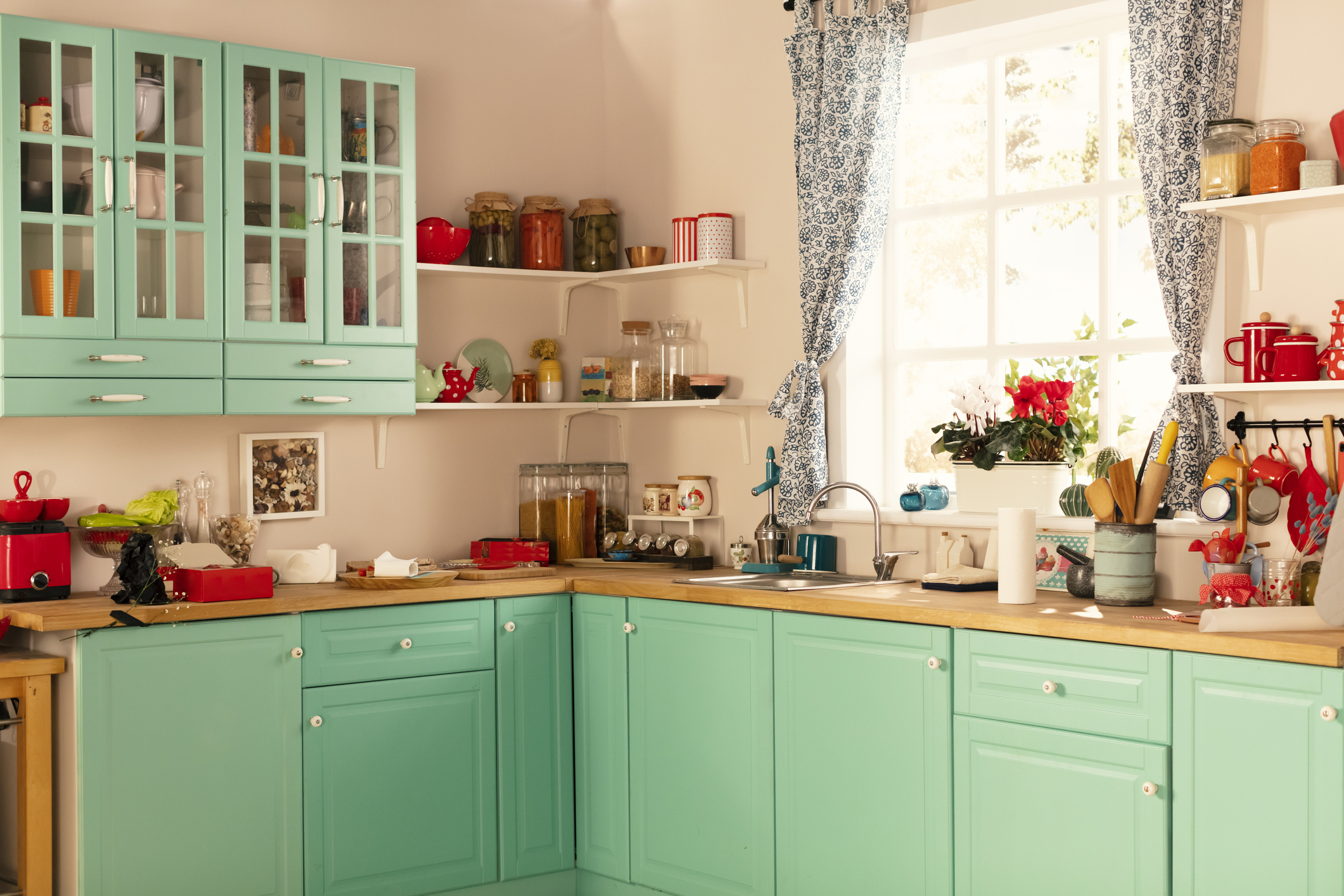
Image Source: Getty Images – Image Source: Dreamer Company
Say “So Long!” to Neutrals
A combination of factors—people spending more time at home, remote work becoming more prevalent, the lasting effects on home life throughout the COVID-19 pandemic—have created a shift in how neutrals are viewed. Moving forward, expect to see a different take on the old “less is more” saying when it comes to home décor. Colors are officially back. Instead of minimalist, white-washed backdrops, designers suggest experimenting with more colorful landscapes to create vibrant, lively spaces. Now is the time to consider painting your kitchen cabinets something vibrant, add those multi-colored throw pillows that may have previously seemed too bold, or try out that wild idea you had for a gallery wall.
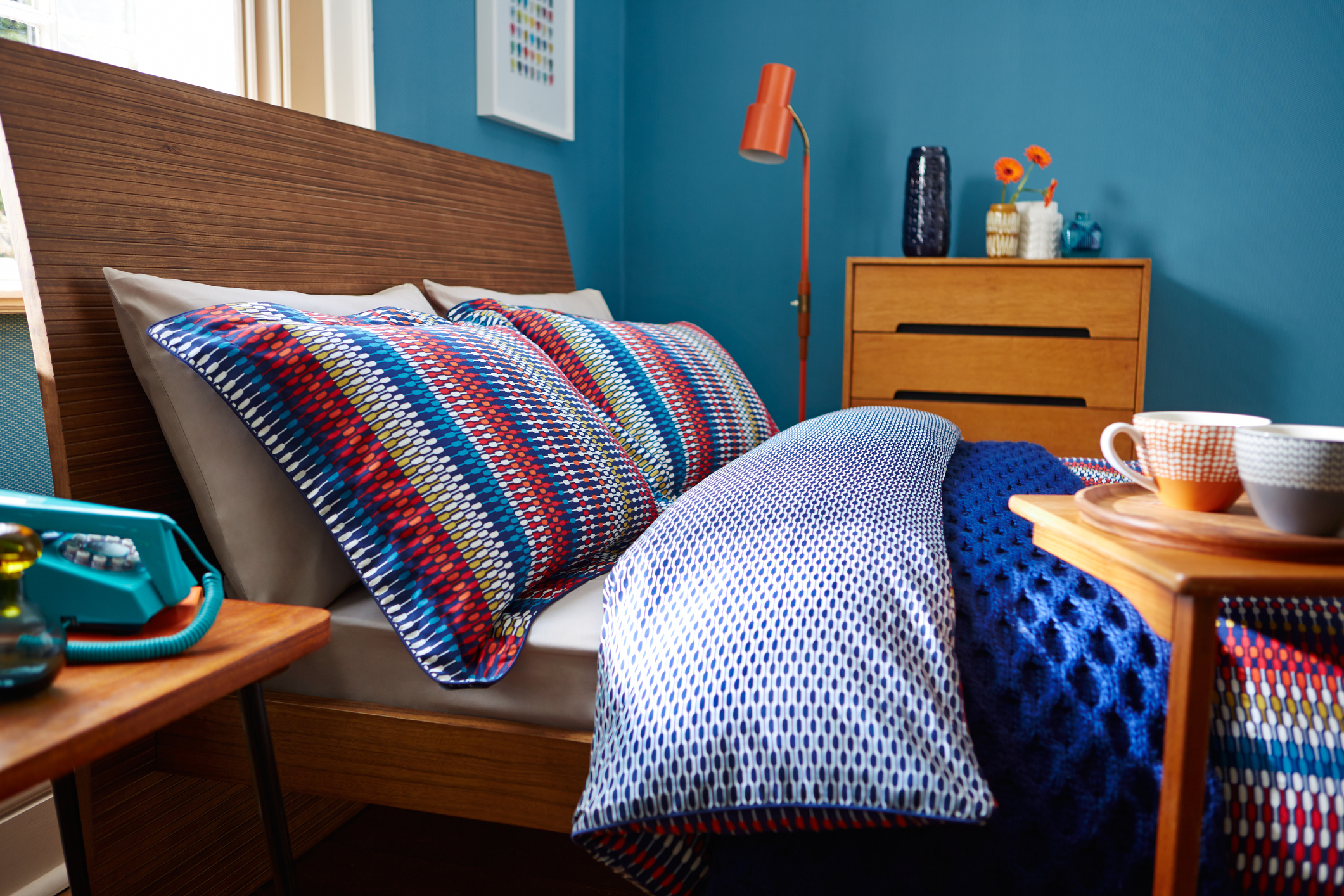
Image Source: Getty Images – Image Source: Onzeg
Healing Colors
Recent times have raised homeowners’ collective awareness about the meaning of the spaces they live in and how they impact their overall wellbeing. This perspective shift has elevated the importance of earthy tones. Deep greens, organic browns, rust-tinged oranges, calming blues, and illuminating yellows are all colors that bring natural elements to mind—i.e., plants, running water, the sun. Let your imagination run wild with ways that you can incorporate these colors into your home to give it a modern effervescence.
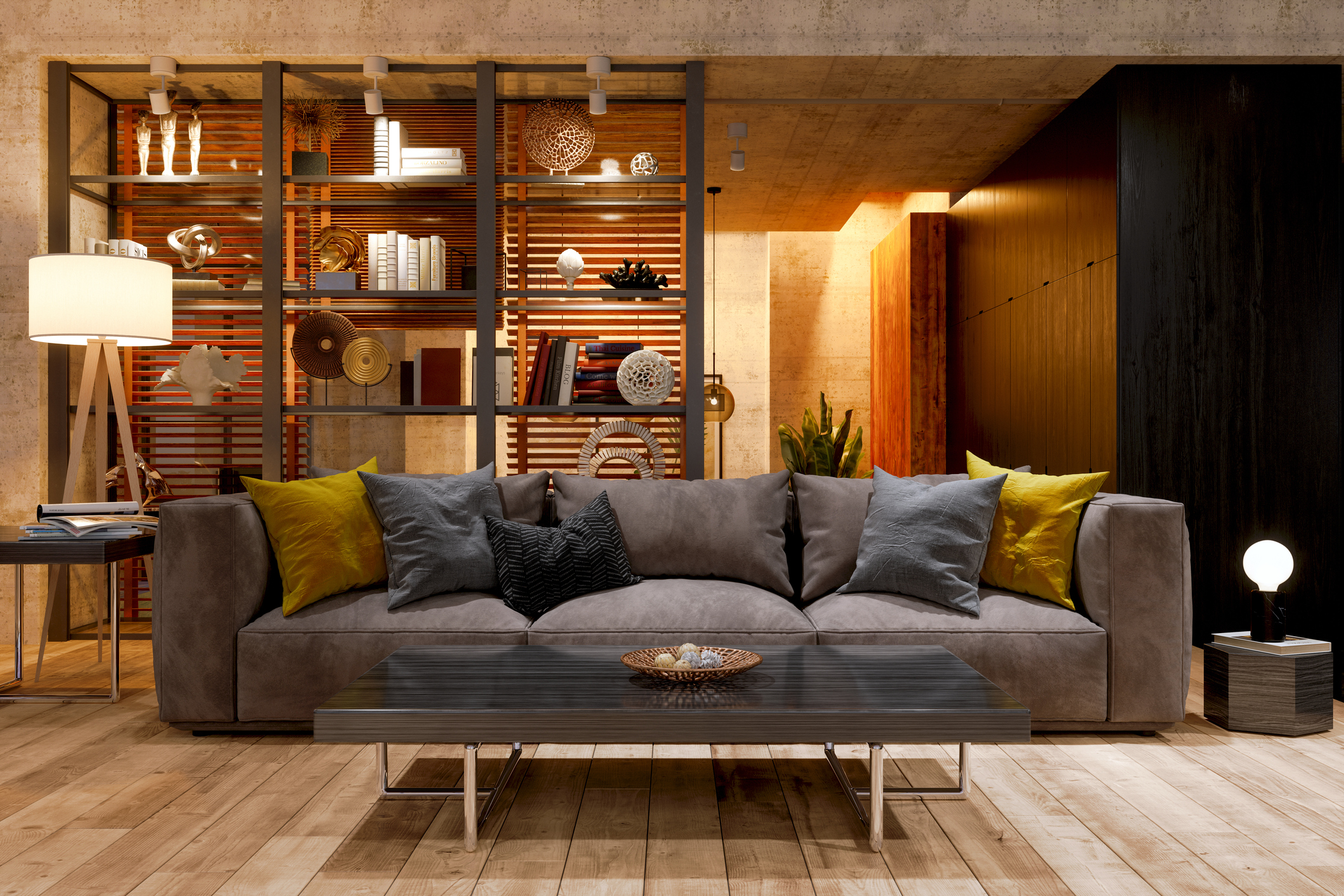
Image Source: Getty Images – Image Source: onurdongel
Other Colorful Trends for Your Home
Tile and furniture are some other larger surface areas that can greatly benefit from a splash of color. Different tile designs can evoke different aspects of modern design and help to liven up backsplash-heavy spaces like your kitchen or your bathroom where white subway tile may leave something to be desired. Give yourself carte blanche when searching for colorful furniture. Explore bold patterns and different color combinations that complement other items in the spaces they’ll inhabit.
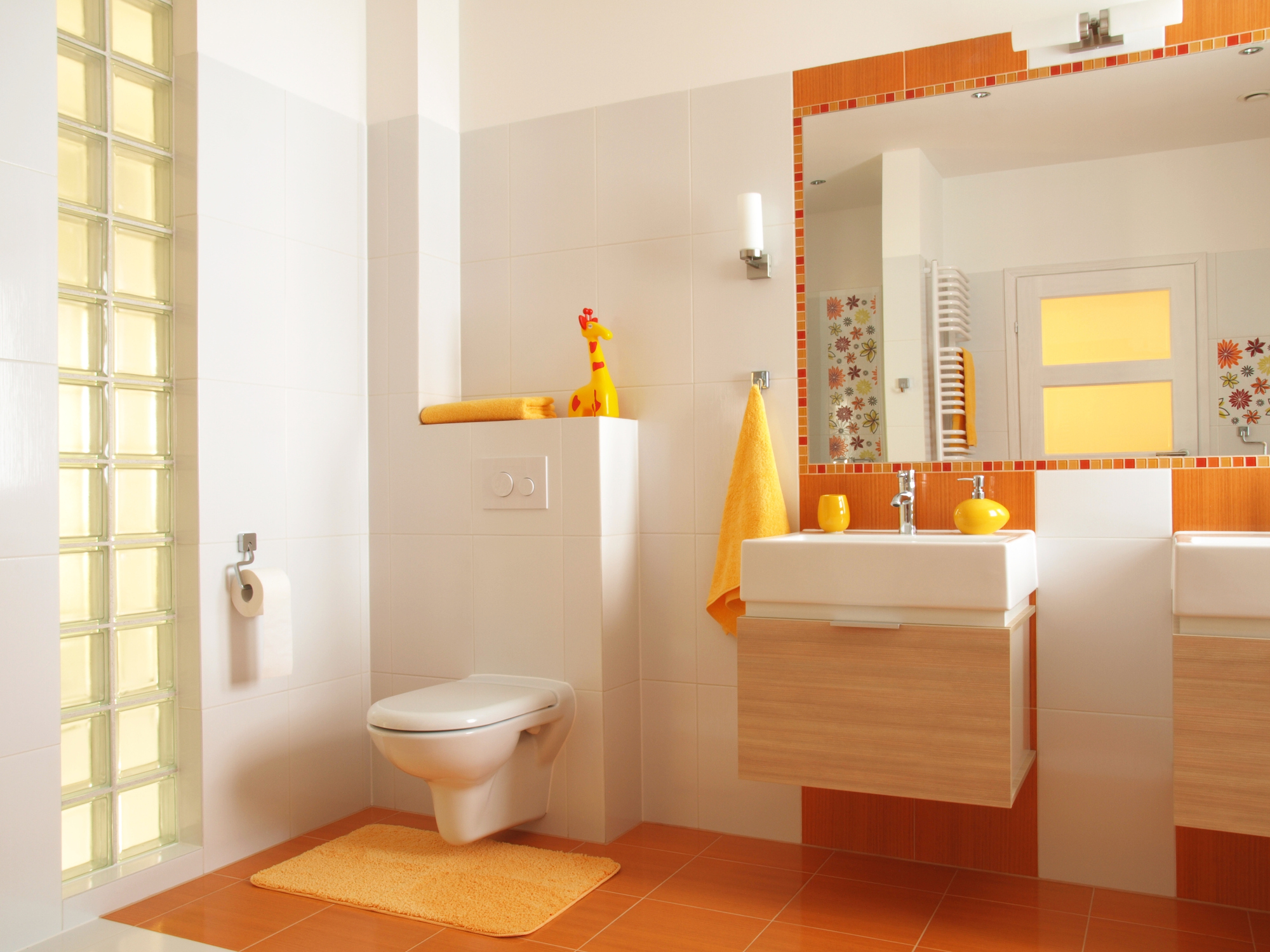
Image Source: Getty Images – Image Source: KatarzynaBialasiewicz
For more tips on adding color to your home using plants, read our guide on decorating with indoor plants.
How to Use Pantone’s Color of the Year 2022 in Your Home
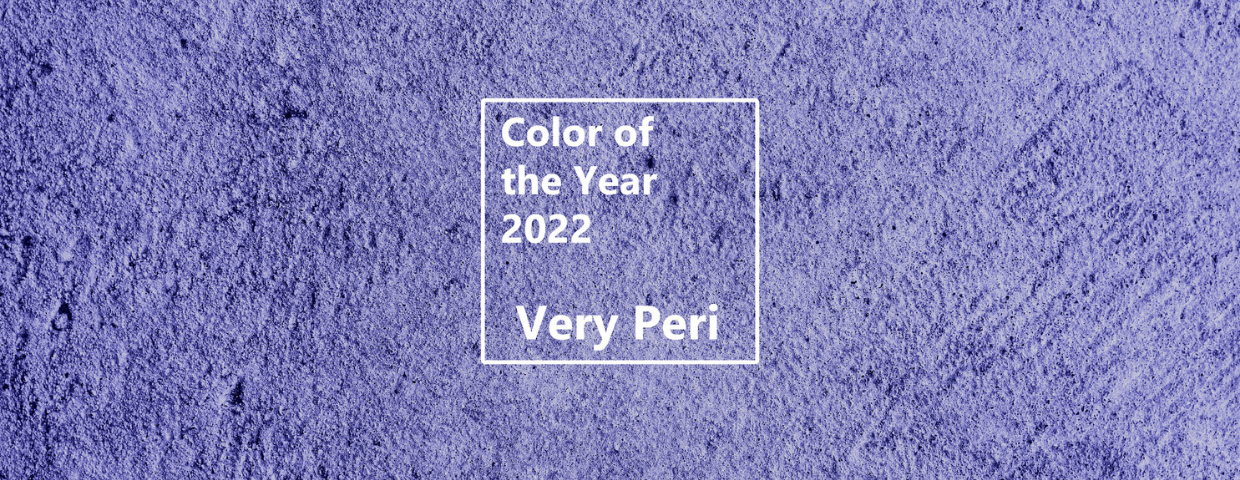
Pantone has spoken. Last month, the newsworthy color institute announced their choice for Color of the Year 2022: Very Peri. Pantone says Very Peri is a color “whose courageous presence encourages personal inventiveness and creativity.” So, what is Very Peri? And how can you be inventive and creative when using it in your home? We’ve got you covered.
Pantone Color of the Year 2022: Very Peri
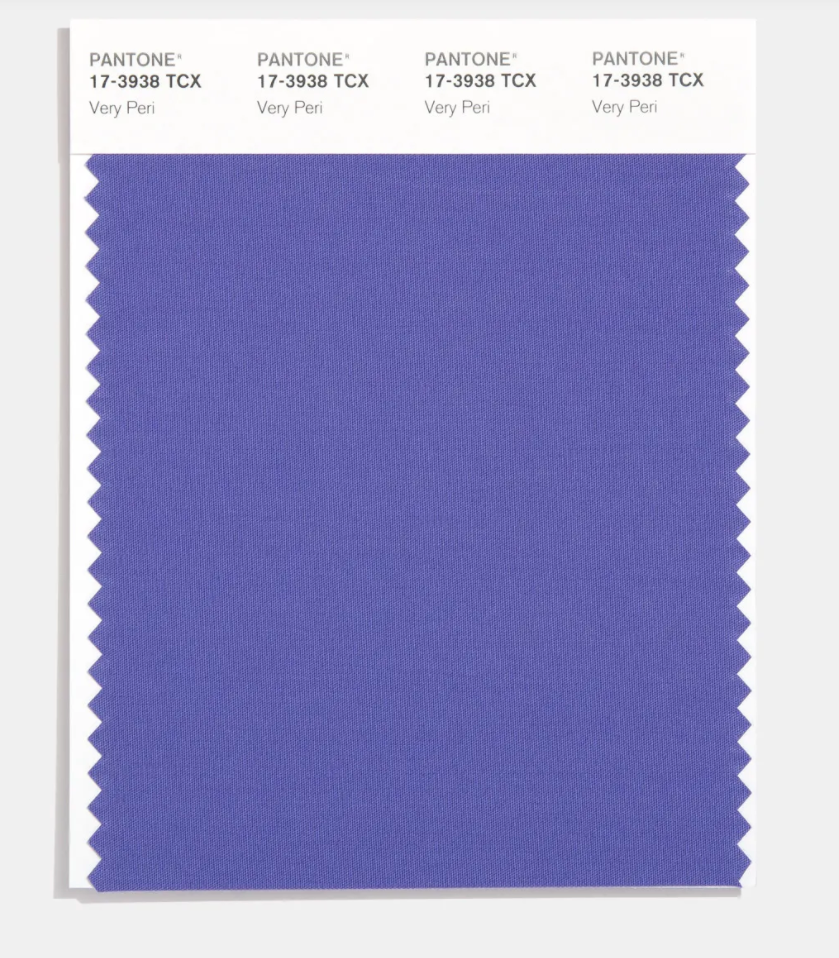
Image Source: Pantone.com
Very Peri is a periwinkle blue with violet-red undertones. This combination of cool colors with elements of warm hues creates an interesting combination. Pantone describes the mood that Very Peri creates as representative of the times we’re living in. They cite the merging of the physical and digital world, recent widespread isolation, and expanding popularity of the metaverse as inspiration for choosing the color. Pantone’s 2022 selection also marks the first time they’ve created an original color in the history of the Color of the Year educational program.
How to Use Very Peri in Your Home
Paint with Very Peri
Due to its calming yet dynamic nature, Very Peri makes for the perfect wall color. Repaint your living room or kitchen wall to give your home a healthy dose of a brand-new color or use it on accent walls in smaller spaces such as your bedroom, bathroom, or home office.
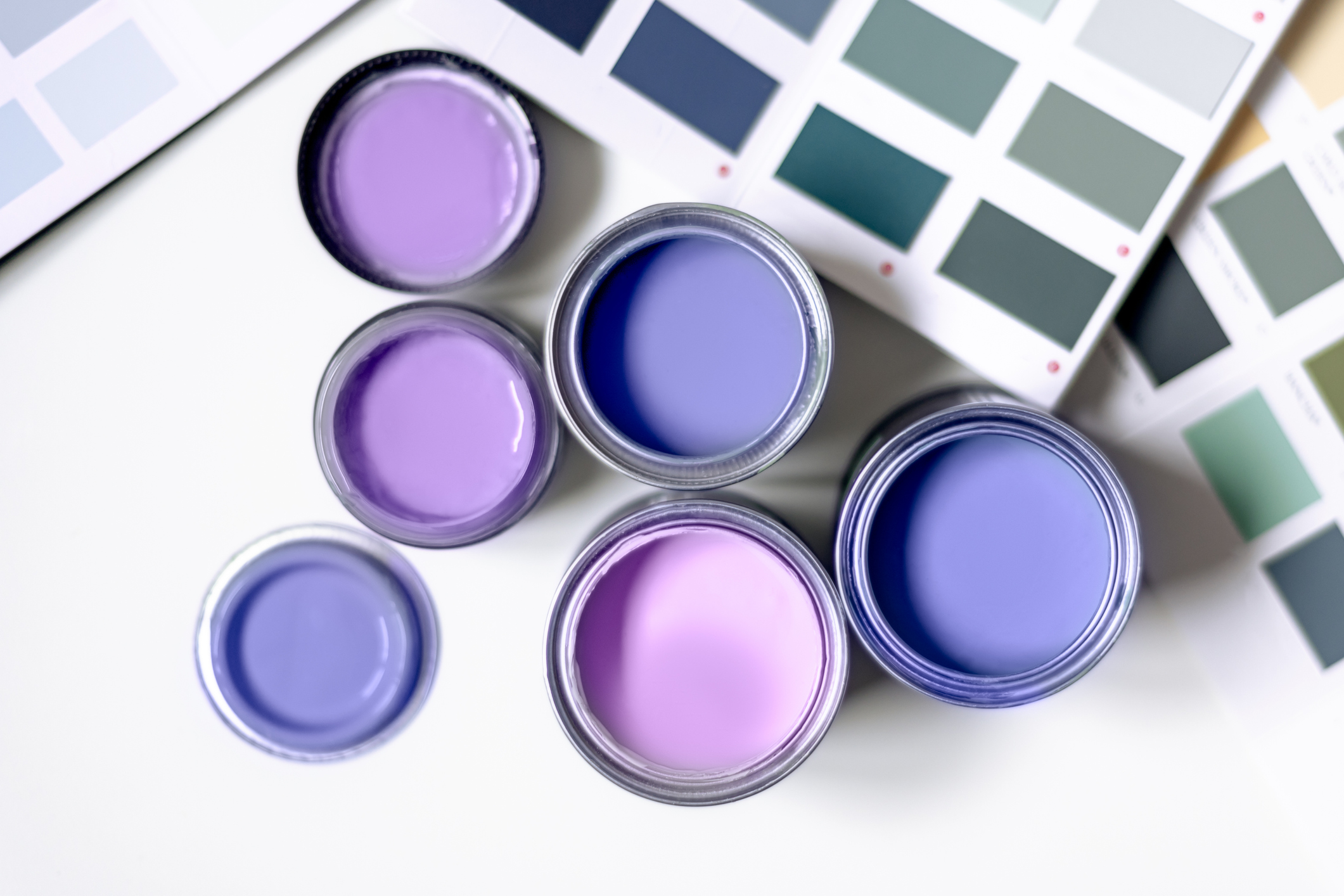
Image Source: Getty Images – Image Credit: Manuta
Decorate with Very Peri
Very Peri’s exuberance translates well into both small and large surface areas. Even by using it as a detailing color, its eye-popping charm can give meaning to the spaces it inhabits. Carpets, throw pillows, blankets, and flower vases are all perfect examples of how you can sprinkle in this color throughout your home. It also suits larger furniture pieces well, such as a couch, chair, or bedding. It’s a color you’ll want to sink into and wrap yourself up in. A new Very Peri bedspread may be just the breath of fresh air you need in your bedroom for the new year.
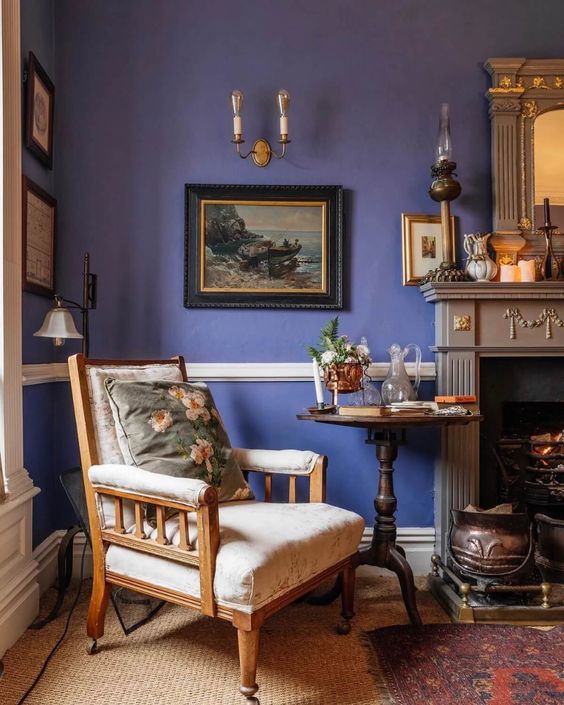
Image Credit: Pinterest – Image Credit: thenordroom.com
Combine Very Peri with Nature
Add an organic touch by pairing Very Peri with a vase of lavender, succulents, or other houseplants to complement its nature-friendly hue. Although there are hints of red embedded in the Very Peri concoction, you can rest assured that this color won’t clash with your indoor garden. Any combinations of purples, blues, greens, and whites will make for a beautiful display.
For more information on how you can incorporate the latest designs into your home, decorating tips, and DIY know-how, head to the Design page on our blog:
7 Vintage Design Elements That Are Still Popular Today
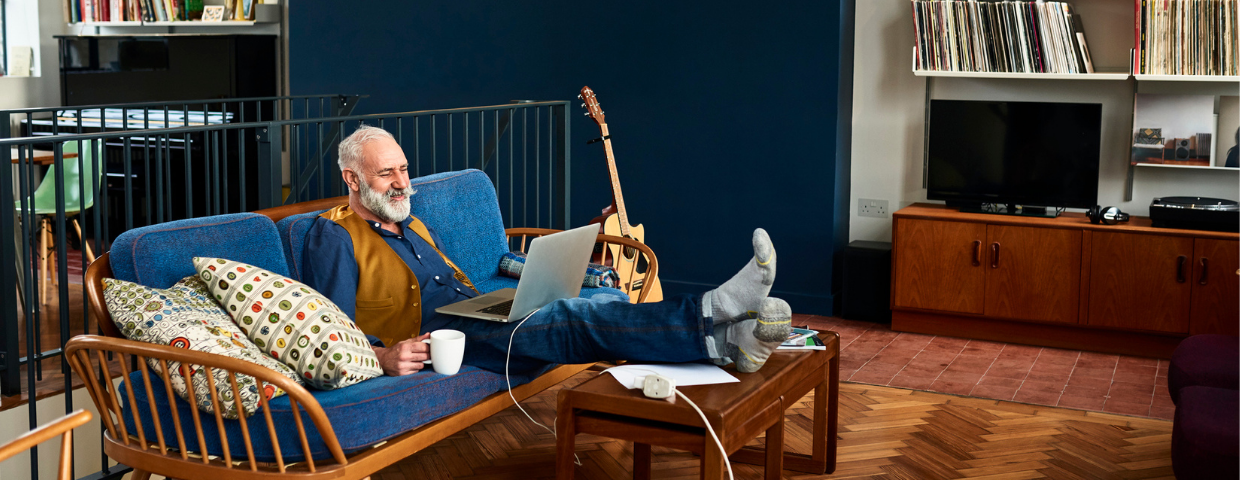
Adding the right touch of vintage décor to your home is a matter of balance. It brings that decades-old, well-traveled quality that gives the spaces in your home a special character. A common concern with vintage décor is that it will make a home feel outdated. Fortunately, certain design elements and trends have stood the test of time.
We tend to think of vintage décor in terms of well-known objects, like shag carpets and Eames chairs, but it is so much more than that. Some of the most iconic design concepts of eras past continue to influence how we design our homes today. From features to furniture, here are just a few that have maintained their popularity with homeowners and interior designers alike.
7 Vintage Design Elements That Are Still Popular Today
1. Built-Ins
The history of built-ins dates back to the Arts & Crafts movement of the late nineteenth century to the early twentieth century. In contrast to the Victorian period that preceded them, the Arts & Crafts designers looked to simplify home design by working features into the structure of the home itself. The clean aesthetic look of built ins, as well as their functionality and the storage they provide, have kept them relevant for decades.
2. Exposed Brick
Exposed brick has maintained its popularity through the years, sometimes used to compliment certain modern design trends, such as Industrial, a common design choice for open-concept, non-traditional living spaces such as lofts. Whether it’s stripping away a wall to reveal a chimney or using it as a backsplash for open shelving, exposed brick creates a vintage lived-in quality. Its natural pattern and textured surface work well as either a focal point or an accent piece in large and small spaces alike.
3. Crown Molding
With roots dating back to ancient Greece, crown molding is both decorative and functional. It provides a visual transition for the surfaces in a room by embellishing the space between the ceiling and wall. It can also be a decorative piece for architectural elements such as bookshelves, doorways, etc. Although crown molding is a small detail, it plays a significant role in tying a room together.
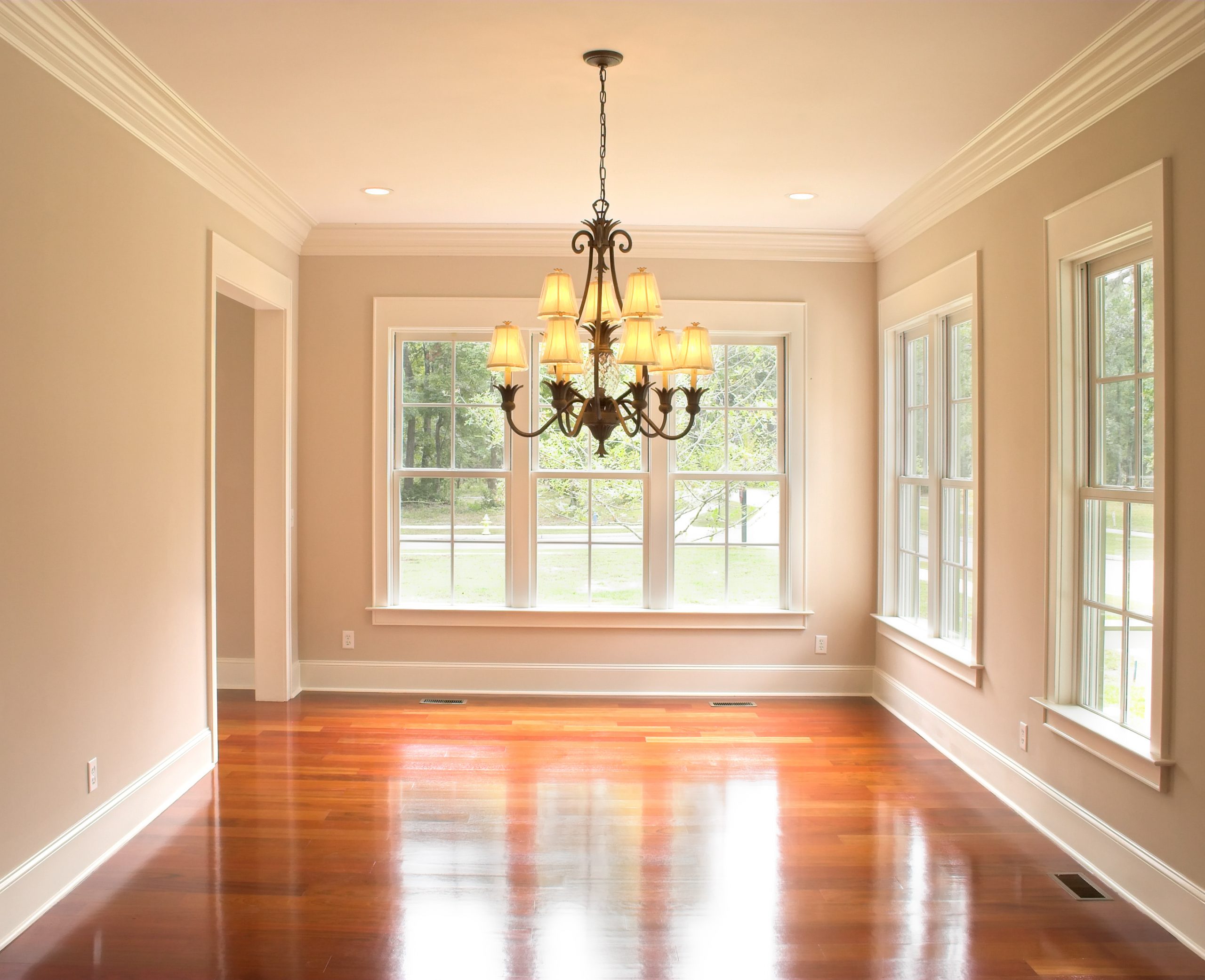
Image Source: Getty Images
4. Marble Countertops
From ancient Rome to the European Renaissance, marble has been widely used throughout history in countless homes throughout the world. Heat resistant and easy to clean, marble countertops have become a staple of kitchens and bathrooms. Due to their large surface area and durability, they are often the centerpiece of kitchen renovation projects. Because marble is porous, it’s best to seal them at the time of installation to prevent damage.
5. Wicker Style Furniture
With origins tracing back thousands of years, wicker-woven furniture is still ubiquitous today. Made from the sturdy and flexible material rattan, wicker furniture is lightweight and weather resistant. It makes for the ideal outdoor patio chair or lounge seat, or the perfect rocker by the fireplace in the living room. A combination of functionality and beauty, wicker furniture’s popularity has showed no signs of slowing down.
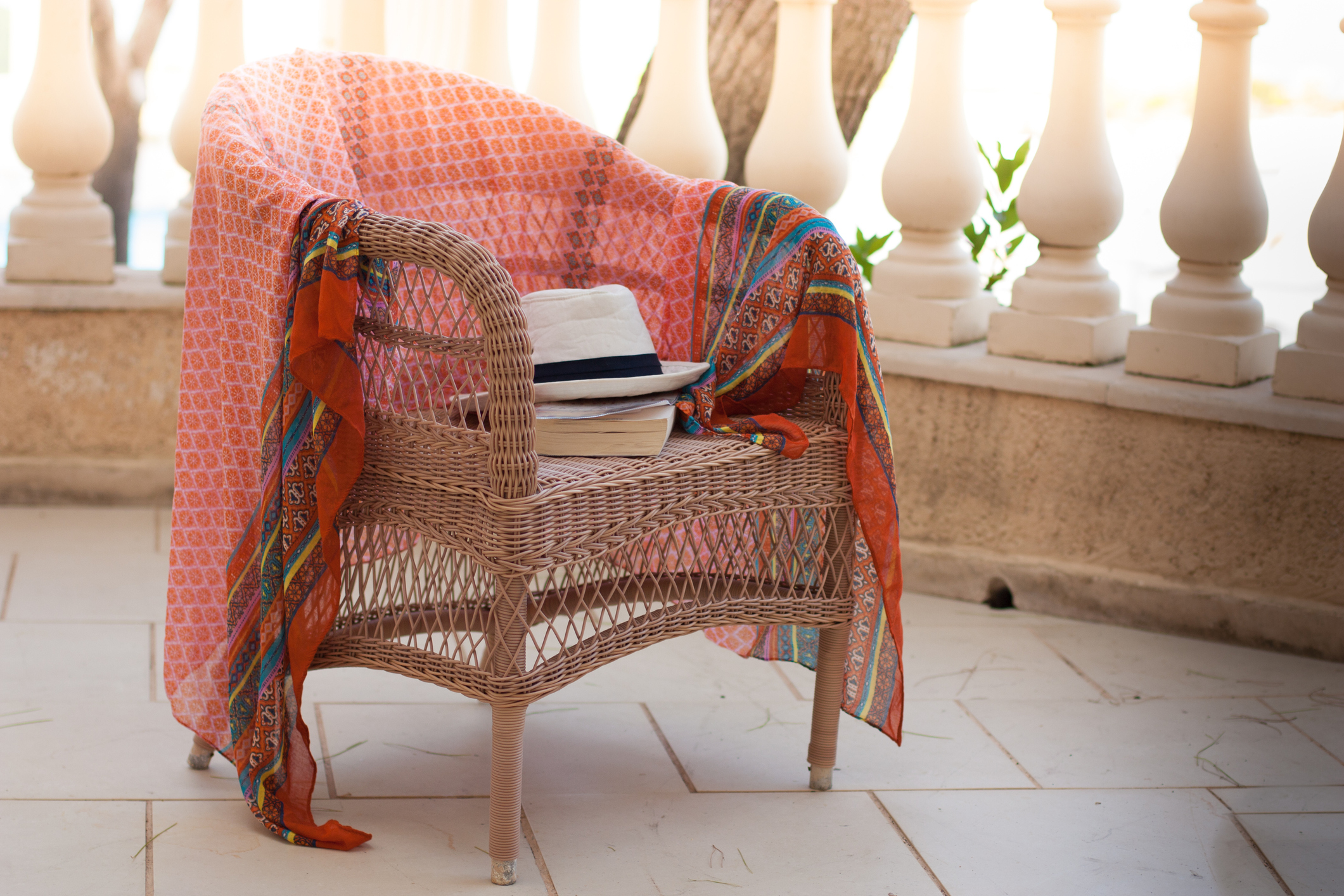
Image Source: Getty Images
6. Checkerboard Tile
Checkerboard tile is a classic element of vintage design, often used on kitchen floors and in bathroom tile work. Designers have always found a way to incorporate this eye-catching black and white pattern into the latest trends. In the home, it can be applied on a large or small scale. If a whole kitchen floor is a bit much for your taste, incorporate it in smaller areas, such as a bathroom backsplash or a backdrop for your shelves.
7. Mid-Century Modern Furniture
The evidence of the Mid-Century Modern (MCM) movement’s relevance is all around us, but in the home, it lives on in its signature furniture pieces. MCM designers took the concepts of modern design—clean lines, minimalism, multi-functionality—and created sleek, interesting furniture pieces that blend into a room and make a statement simultaneously. Common items such as teak desks, Eames chairs, Tulip chairs, credenzas, and raised-legged dressers skyrocketed in popularity during the fifties and sixties. MCM has proven to be timeless, and to this day, its influence can be seen in homes everywhere.
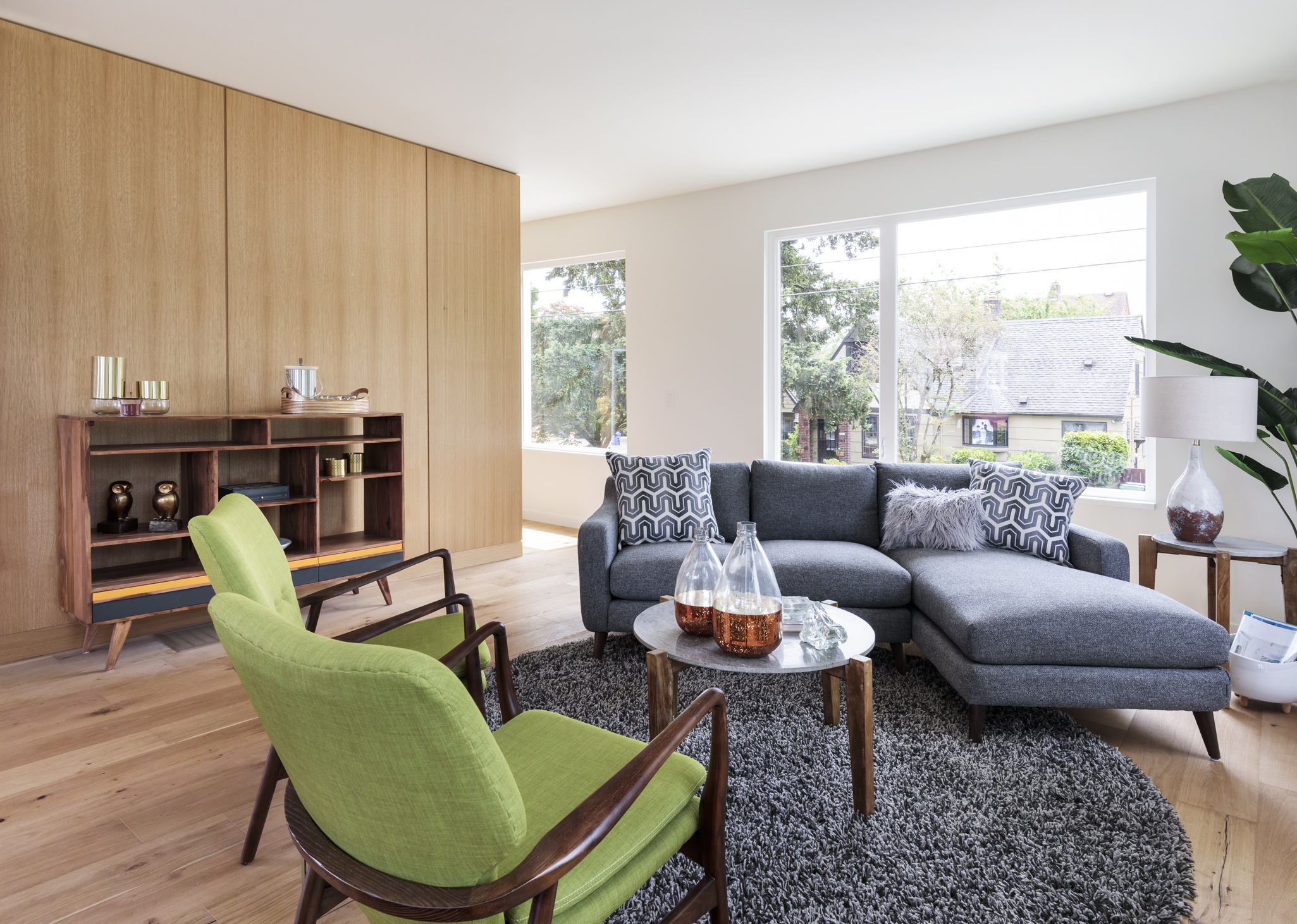
Image Source: Getty Images
For more information on home design styles, check out our Interior Design page on our website.
 Facebook
Facebook
 X
X
 Pinterest
Pinterest
 Copy Link
Copy Link


